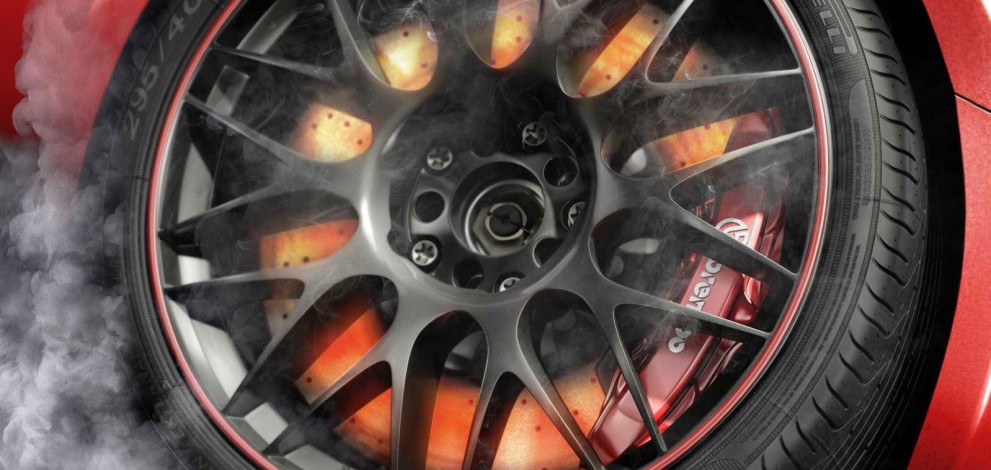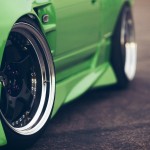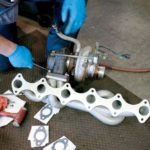Your vehicle’s brakes are the single most important safety feature you have on the road!
Every time you stop in front of a stop sign, a red light, or in heavy traffic you entrust your life and the life of others to the proper function of your brakes.
And while we don’t really consider what goes on in our car when we step on the brake pedal, understanding how this system works is vital to making smarter choices in maintaining and replacing your brake rotors and brake pads!
HOW DOES IT ALL WORK?

When you step down on your brake pedal, it in turn pushes down on a plunger. This plunger rams down into your vehicle’s master cylinder and forces out brake fluid. The fluid travels up the brake lines until it reaches the brake calipers.
The calipers actually “crown” the top part of your brake rotors, and on the inside they are lined with the brake pads.
So when the brake fluid flows into the calipers, they expand and push onto the brake pads. The brake pads in turn push down onto the rotors and stop the wheels from turning.
…and your car halts!
Your brake pads and rotors are so critical to your safety on the road that it doesn’t make sense to cut corners when you have to replace them.
With TDot Performance you have a wide variety of high-performance choices. We carry pads and rotors from trusted and reputable brands like EBC Brakes, Brembo, Hawk Performance, Centric and more.
 |
 |
 |
DRILLED ROTORS
Performance brake rotors are divided into two main types – drilled and slotted.
Drilled rotors actually have small holes drilled into their bodies. This is done for a number of reasons:
Dissipate Heat: Friction is created when the brake pad clamps down onto the rotor. The friction creates a lot of heat. And if that heat doesn’t escape it may cause brake fade and a reduction in stopping power. This is where the drilled holes come on – they take this heat away from the rotor surface.
Gas Buildup: The materials which some of the older brake pads are made of create a gas buildup between the rotor and the pad. And this buildup reduces the friction between the two components and limits your overall stopping power. In this case, the drilled holes act as an escape route for the gas.
Water Retention: There are countless ways in which your brake rotors can get wet, including rain, a carwash, or driving through a puddle. And when your rotor is wet, its surface becomes slippery and difficult to grip by the brake pad. Again, this is detrimental for your stopping power. The drilled holes actually lead water droplets away from the rotor surface to ensure it remains dry.
The con of drilled rotors is that they are structurally weaker compared to other rotors. All the holes that do so much good for your braking power, can’t hold up to repeated stress in the long run and can even cause the rotor to crack.
The bottom line:
If you enjoy a moderate driving style, drilled rotors may be your go-to choice! Their drilled surface guarantees superior stopping power and resistance to brake fade.
Drilled rotors are not engineered for performance driving.
So if you enjoy aggressive horsepower, you need to be sure your brake rotors can handle the added stress!
 |
 |
 |
SLOTTED ROTORS
Slotted brake rotors feature carved slots instead of drilled holes.
The slots serve the same way as drilled holes – they dissipate heat, release gas buildup, and lead water droplets away from the rotor surface.
Slotted rotors are a suitable choice for performance drivers because they are durable enough to take on the stress of repeatedly hard driving.
But on the downside, they will easily and quickly wear down your vehicle’s brake pads. This is why most performance drivers choose drilled rotors. While slotted rotors are the go-to choice for the racetrack.
 |
 |
 |








